Visiting the Panama Canal for the first time is an extraordinary experience, made all the more special if you take some time to learn about this incredible feat of engineering.
Make the most of your visit to the Panama Canal by understanding the canal’s history, mechanics, and importance to trade.
Learn about its setting and context, too; there are opportunities to experience the lush rainforest and serene lakes through which the waterway passes, explore historic forts, and learn about Panama’s exceptional biodiversity.
Here are 13 tips to enhance your visit to the Panama Canal.
Pick the Right Season
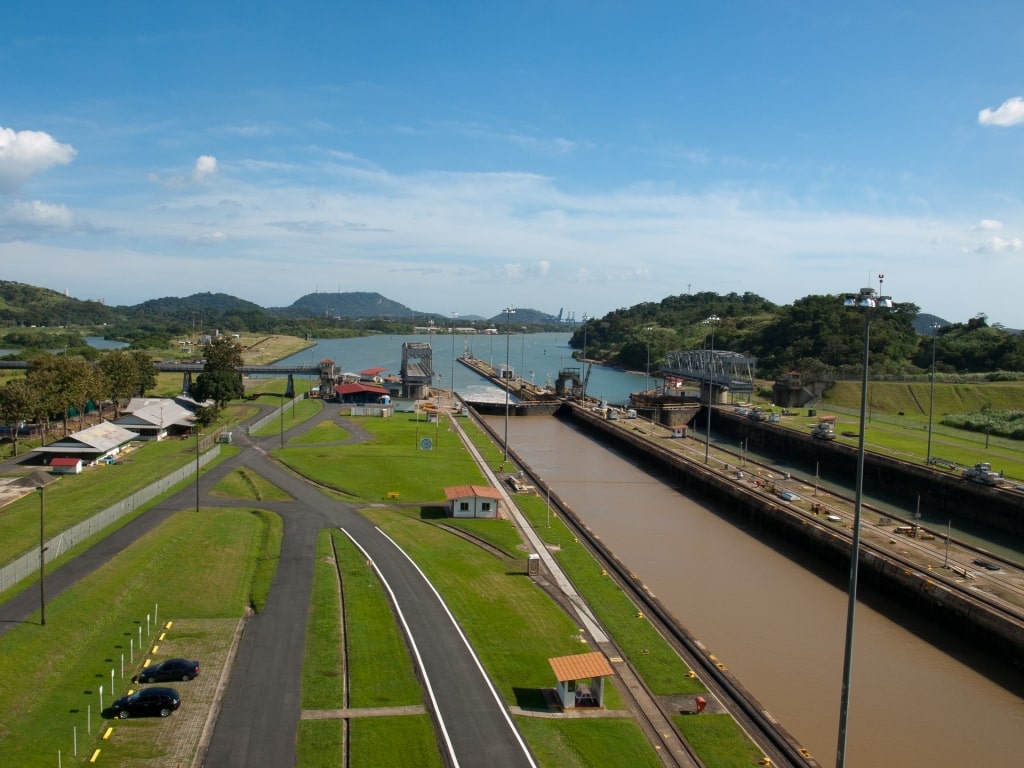
Panama Canal
The best time to visit the Panama Canal is from November through April. November marks the end of Panama’s rainy season. The canal does, of course, operate year-round, regardless.
The weather is typically sunny and dry from November through April, perfect conditions for visiting the Panama Canal, exploring the ancient forts on the Pacific and Caribbean sides, and seeing the rainforest in all its lush splendor.
Understand the Geography
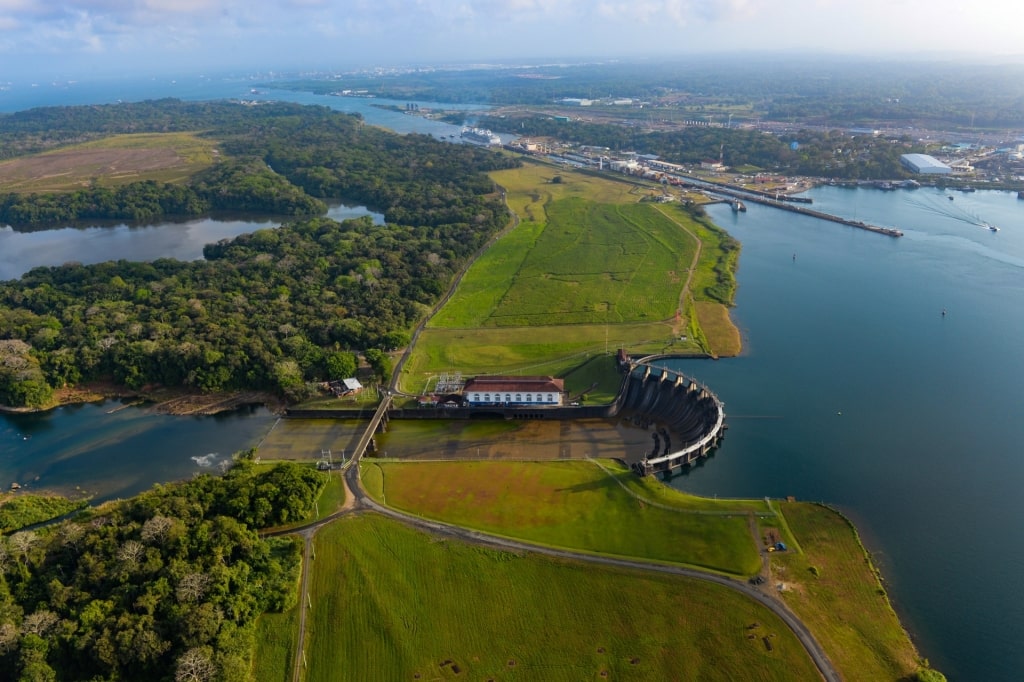
Gatun Locks
Cutting through the Isthmus of Panama, the Panama Canal connects the Atlantic and Pacific oceans, creating an essential shortcut for ships. Prior to the canal’s opening in 1914, vessels transiting the two oceans had to circumnavigate South America.
By using the 50-mile-long man-made canal, ships traveling from the Atlantic to the Pacific or the reverse reduced their voyage by about 8,000 nautical miles.
To transit the canal, ships must be raised to cross the Continental Divide and to bridge the difference in height between the higher Pacific Ocean and the lower Atlantic.
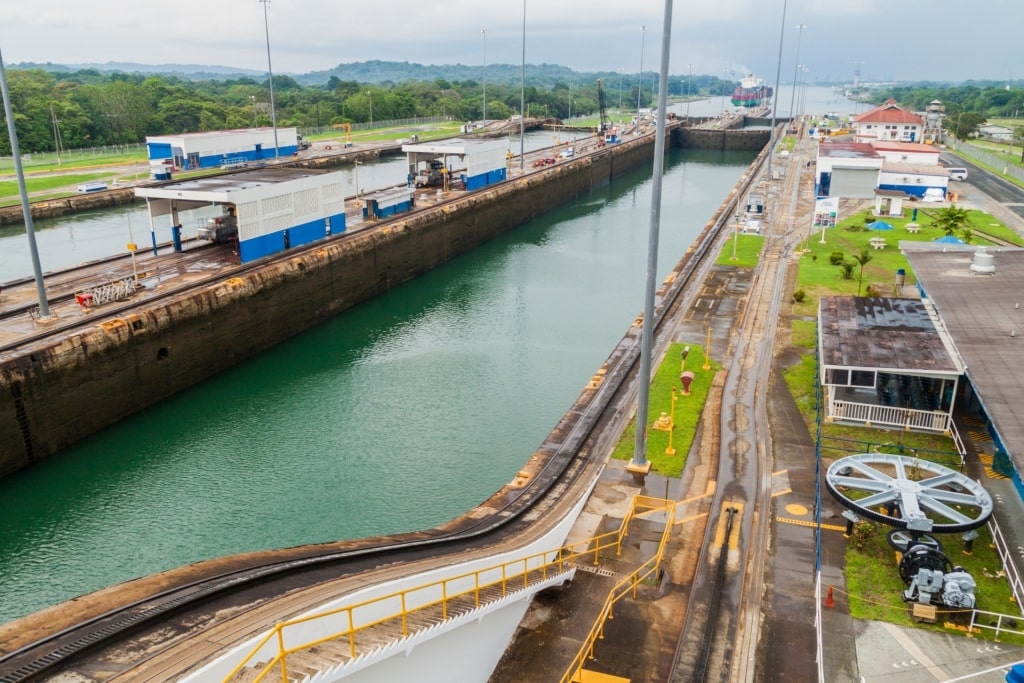
Gatun Locks
In crossing from the Atlantic to the Pacific, the Gatun Locks raise the ships 85 feet to the level of man-made Gatun Lake. Then, ships cruise the Culebra Cut, formerly known as the Gaillard Cut, which allows the vessels to cross the Continental Divide.
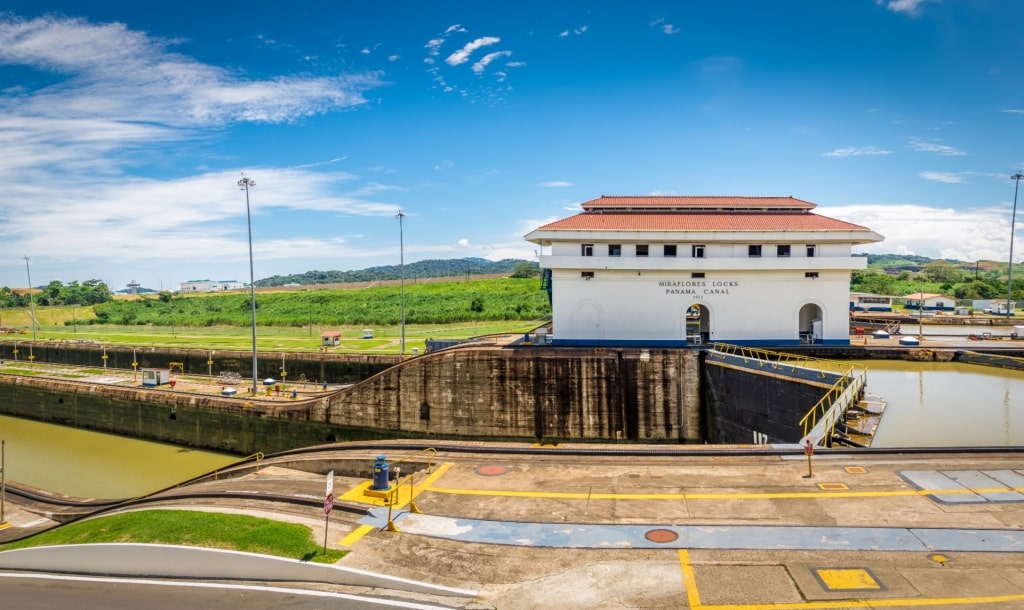
Miraflores Locks
Next, the Pedro Miguel Locks lower ships to the level of Miraflores Lake, after which the Miraflores Locks lower the ships to sea level. It takes about eight to ten hours for a ship to make the crossing.
Read: The Ultimate Guide To Panama Canal Cruises From California
Know Your Canal Jargon
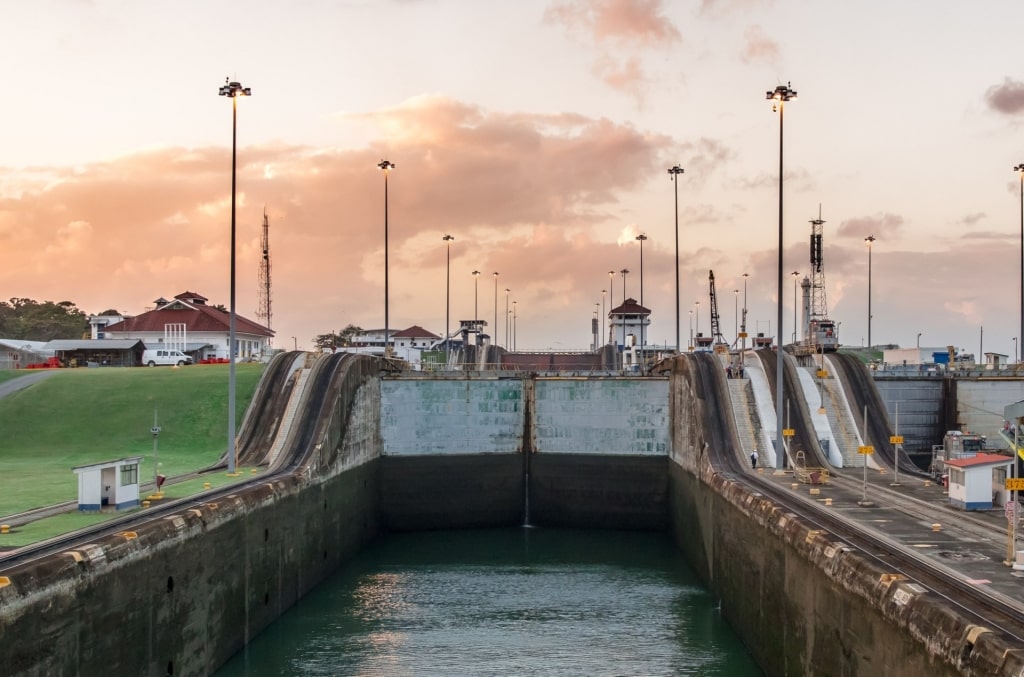
Panama Canal
Being able to fit through the Panama Canal is so important that engineers specifically design vessels, called Panamax ships, that can fit through the locks.
When the canal opened in 1914, ships transiting the canal could be no wider than 106 feet, no longer than 965 feet, with a maximum draft of 39.5 feet.
Vessels meeting those requirements can transit the original locks, which are 110 feet wide, 1,050 feet long, with a maximum draft of 41 feet.
As trade grew, so did the canal and the ships. In 2016, wider, longer, and deeper lanes were opened to accommodate larger passenger and cargo vessels, known as New Panamax or Neo Panamax ships. Engineers employed so much steel in the $5.2 billion expansion of the locks that they could have constructed 22 Eiffel Towers.
Vastly important, the canal accounts for six percent of world trade, with about 14,000 transits a year. But still, the very biggest container ships cannot access the canal and have to be used by shipping lines on different trade routes.
Immerse Yourself in Canal History
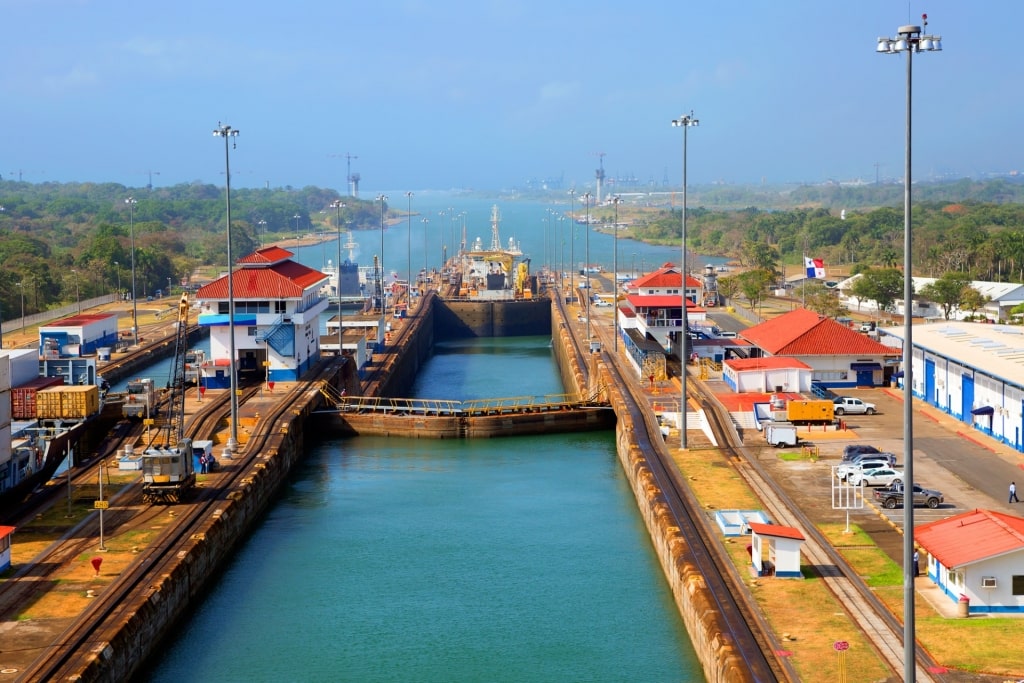
Panama Canal
Learning the fascinating history of the Panama Canal enriches your visit. France began construction on a canal in Panama in 1881, then abandoned the endeavor in 1889.
Before the U.S. could take over the project, America had to encourage the Panamanians to declare their independence from Colombia.
Conditions in the late 19th and early 20th century were incredibly harsh. More than 25,000 workers died, many from malaria and yellow fever, during the construction of the Panama Canal.
There are several excellent books about the construction and it’s worth reading up about the canal before you visit.
Be Panama Ready
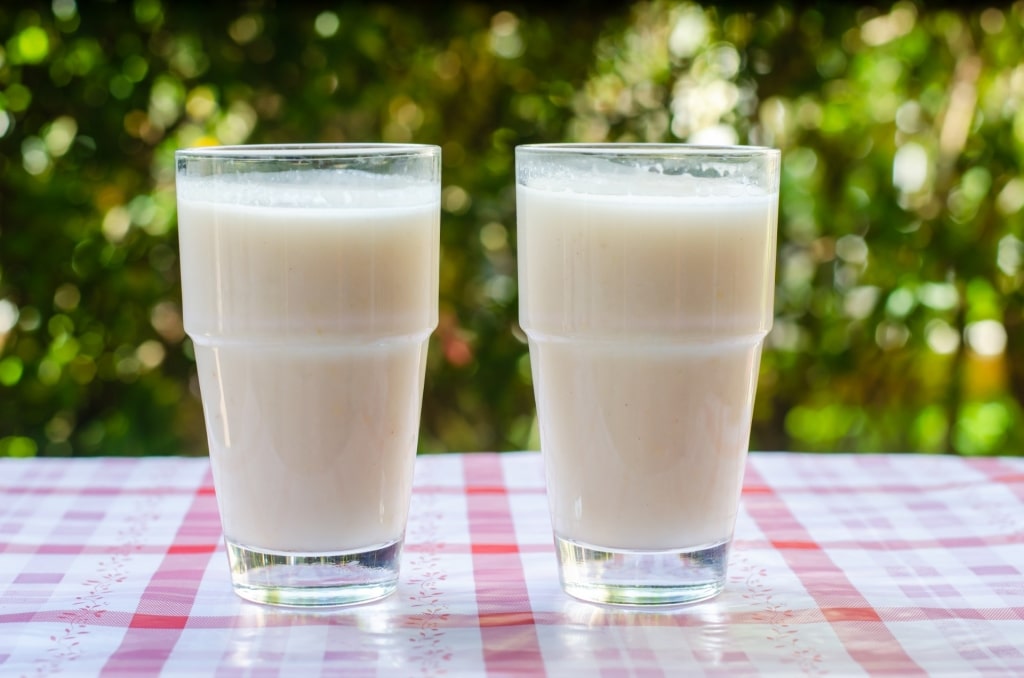
Chicheme
Remember that it’s warm in Panama. Be sure to pack a hat, refillable water bottle, long-sleeved, lightweight top, and pants that protect you from sunburn. And don’t forget to lather on sunscreen and insect repellent if you’re headed into the rainforest.
After your visit, cool off with a cold chicheme, a sweet Panamanian drink made from boiled corn, evaporated milk, cinnamon, and sugar, or a cold beer or iced tea.
Tour the Miraflores Visitor Center
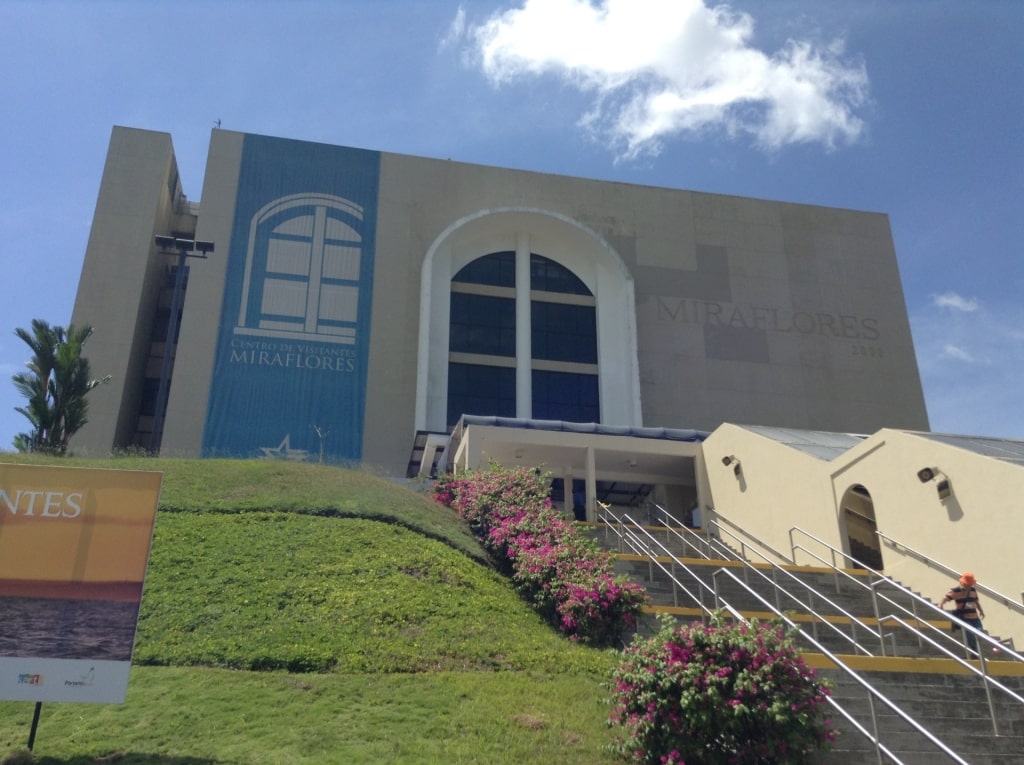
Miraflores Visitor Center Photo by MusikAnimal on Wikimedia Commons, licensed under CC BY-SA 4.0
The big draw at the Miraflores Visitor Center is watching a ship transit the mighty Miraflores Lock. From the center’s viewing platform, you can take in the wide-angle sight of an entire ship passing through the lock.
It’s best to arrive when the canal is busiest, often between 9 a.m. to 11 a.m. and 3 p.m. to 5 p.m. You also might enjoy the exhibits at the center’s museum and its IMAX film, which covers the history and construction of the canal.
There’s a café at the Visitor Center where you can sit down for lunch and watch the extraordinary sight of vessels transiting the lock, whether they’re giant container ships, passenger vessels, or tiny yachts.
Explore the Rainforest Canopy
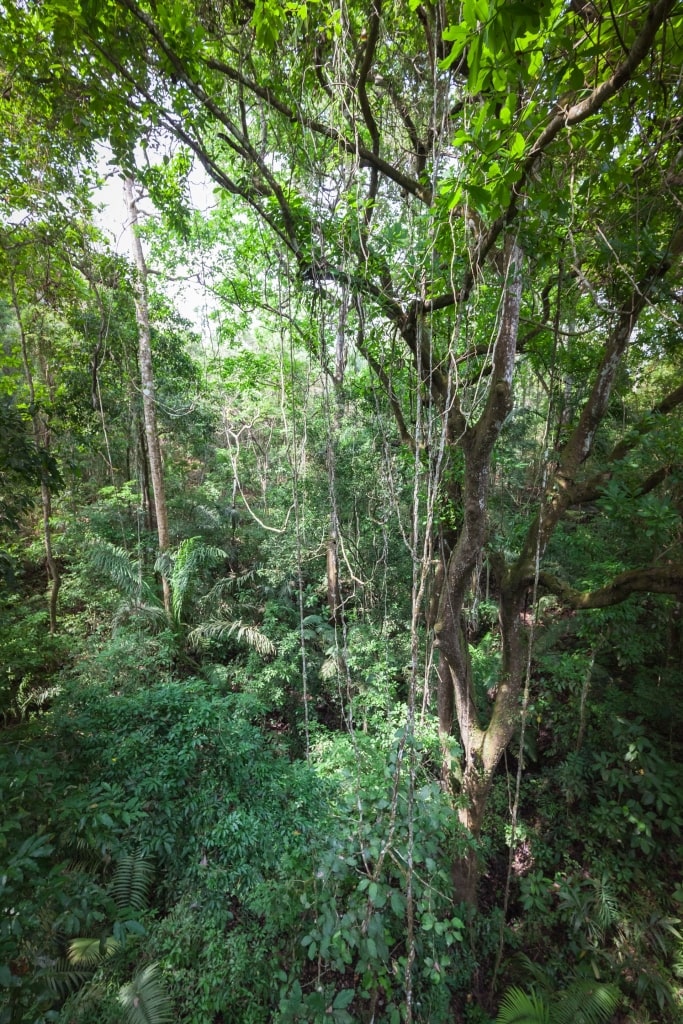
Rainforest in Panama
Workers cut and dug through the country’s thick rainforest to build the Panama Canal. On your visit to the Panama Canal, complement your experience with an outing through the area’s amazing rainforest.
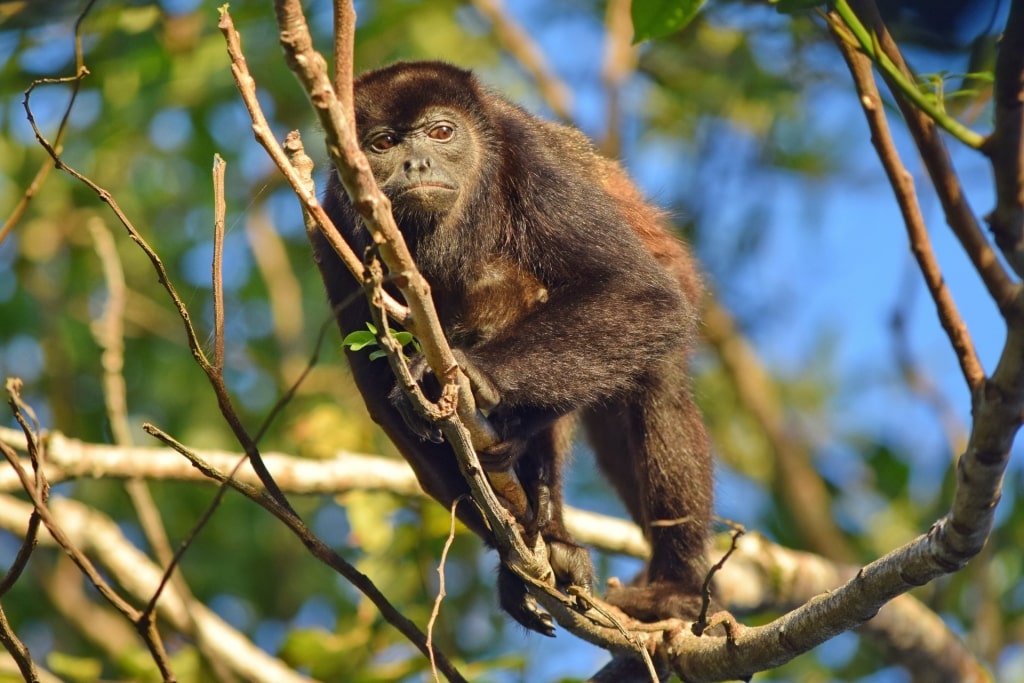
Howler monkey
In The Gamboa Rainforest Reserve, board an aerial tram that lifts you 77 feet up into the lush jungle canopy. You’re likely to spot howler monkeys, birds, and maybe even sloths in the canopy of balsa, fichus, oil palm, and other trees.
Ramps, not stairs, lead to the top of a 98-foot-high observation tower, from which you might see ships passing through the canal.
Boat & Kayak Gatun Lake
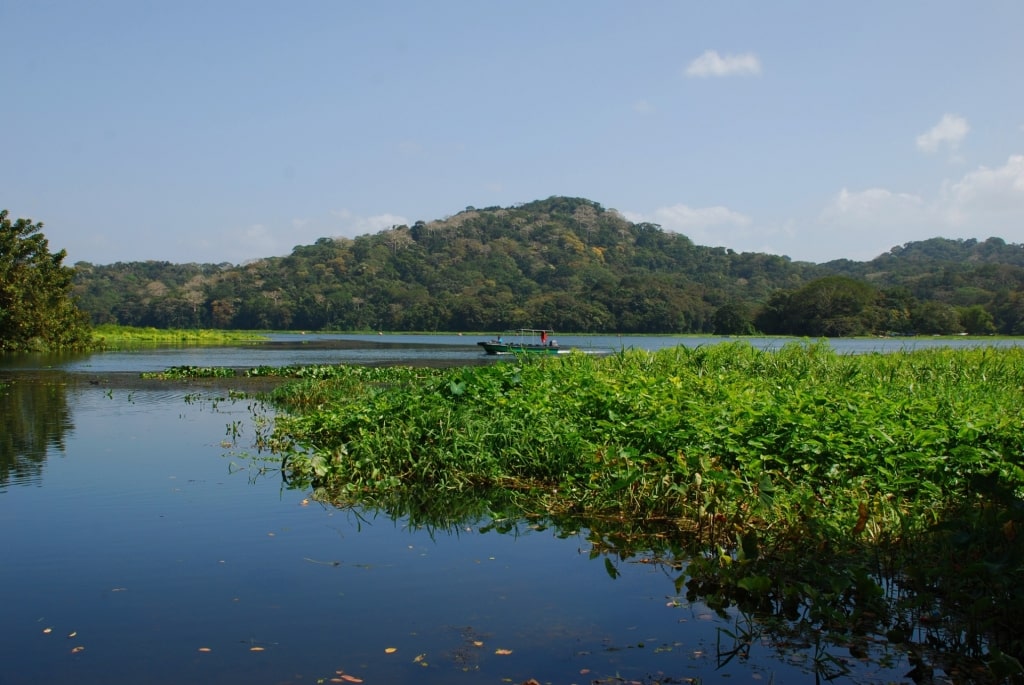
Gatun Lake
By cruising or kayaking past the huge container ships on Gatun Lake, you not only have fun but also gain a visceral sense of how small you are, how huge the vessels are, and how mighty the accomplishment was of engineering and digging the Panama Canal.
The lake, an artificial body of water, acts as a reservoir so that the canal authority can regulate the amount of water in the channels.
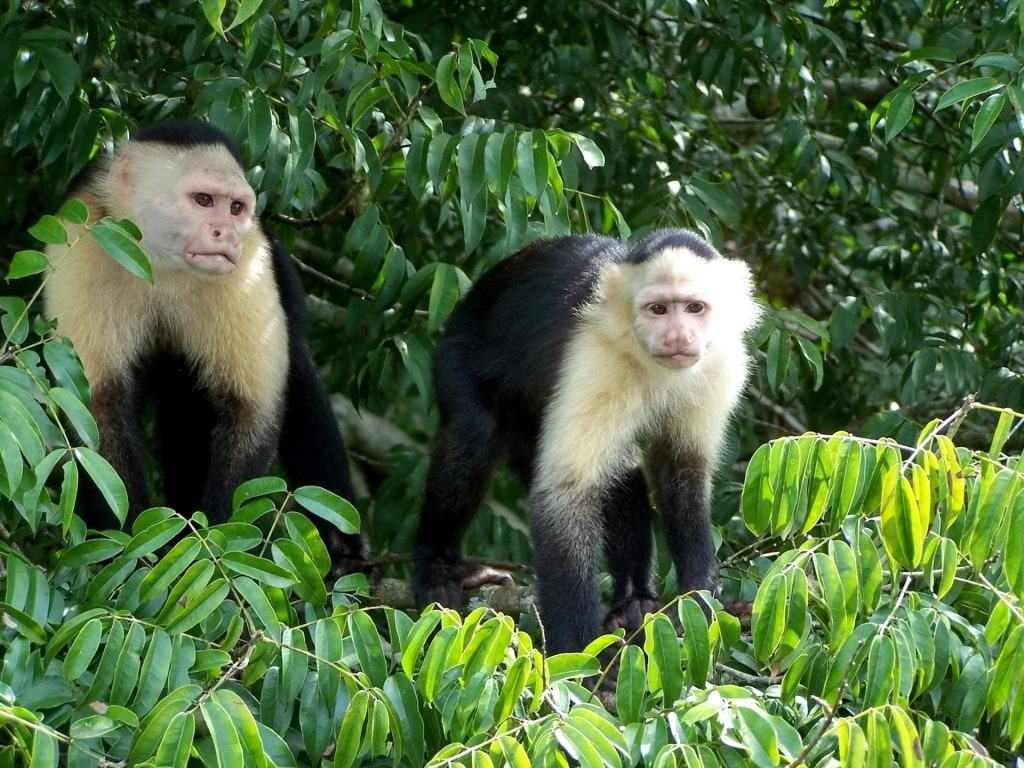
Capuchin monkeys
A favorite spot for day trips by kayak or motorboat is Monkey Island, home to scores of white-faced capuchin monkeys. You could also spot howler and spider monkeys, kingfishers, fish eagles, and turtles.
Look out for the curious Jesus lizard, so named because it “runs” across the surface of the water.
Read: Best Things to Do in Panama
Discover the Early Forts in San Lorenzo and Portobelo
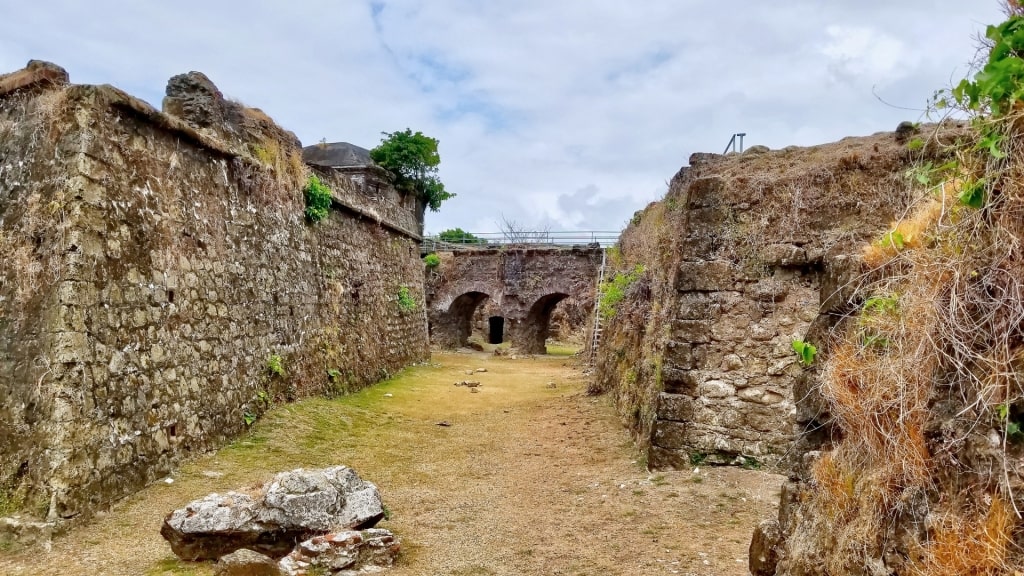
Forts in San Lorenzo and Portobelo
Centuries before the Panama Canal was built, the region served as an important trade area. To protect the gold and silver extracted from their territories in Central America, the Spanish built forts in Panama.
Fort San Lorenzo, constructed between 1587 and 1599, protected the entry to the Chagres River, the terminus of the Las Cruces Trail, a land route the Spanish used to carry their plunder.
Attacked by pirates and privateers over the decades, the fort was rebuilt in the 1680s and the 1760s. Perched atop a promontory, Fort San Lorenzo’s ruins offer a splendid view of the Chagres River.
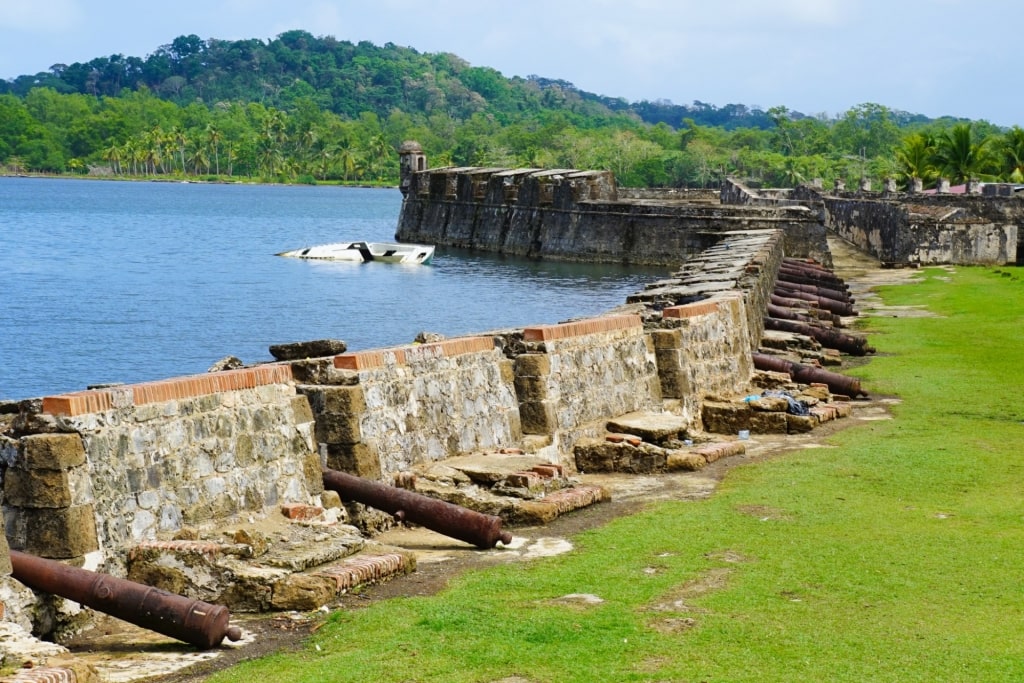
Forts in San Lorenzo and Portobelo
Starting around 1597, the Spanish also used Portobelo’s harbor to transport their booty, constructing a series of forts to protect Portobelo Bay. The ruins attest to the long ago importance of Portobelo. Fort Santiago and San Jeronimo are the two most visited of the four forts. At both ruins, you can see cannons.
Touring the San Lorenzo and Portobelo forts, UNESCO World Heritage Sites known for their examples of Spanish colonial military architecture, adds perspective to the region’s importance.
Learn About Natural History at the Biomuseum
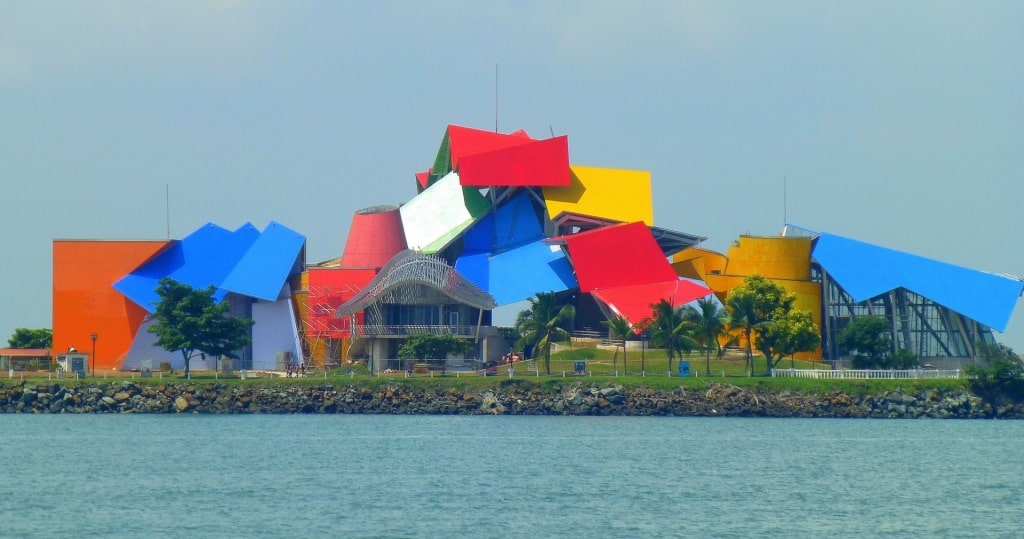
Biomuseum Photo by F Delventhal on Flickr, licensed under CC BY 2.0
While Panama’s Pacific coast may seem like a world away from the Caribbean, it’s actually very close. If you base yourself in Colon, on the Caribbean side, you can be in Panama City, on the Pacific coast, in under an hour by road.
On a drive of the Amador Causeway in Panama City, you can’t miss the Frank Gehry-designed Biomuseo, with its striking roof of angled red, green, blue, and yellow panels.
Exploring the Biomuseo broadens your visit to the Panama Canal by expanding your understanding of the region’s biodiversity.
At the museum, learn about the geological formation of the Isthmus of Panama and how it affected biodiversity by creating a bridge between North and South America, but dividing the oceans.
Other exhibits focus on the region’s human inhabitants and the differing sea life in the Atlantic and Pacific oceans.
Along with text, exhibits contain what exhibit designer Bruce Mau called “a device of wonder,” an element that uses art to convey scientific principles. In the Great Exchange, for example, scores of life-sized animal sculptures spiral through the gallery reinforcing the concept of animal migration between the continents.
In Panarama, ten screens surround you with a dazzling slideshow of Panama’s ecosystems.
Sample Panamanian Food
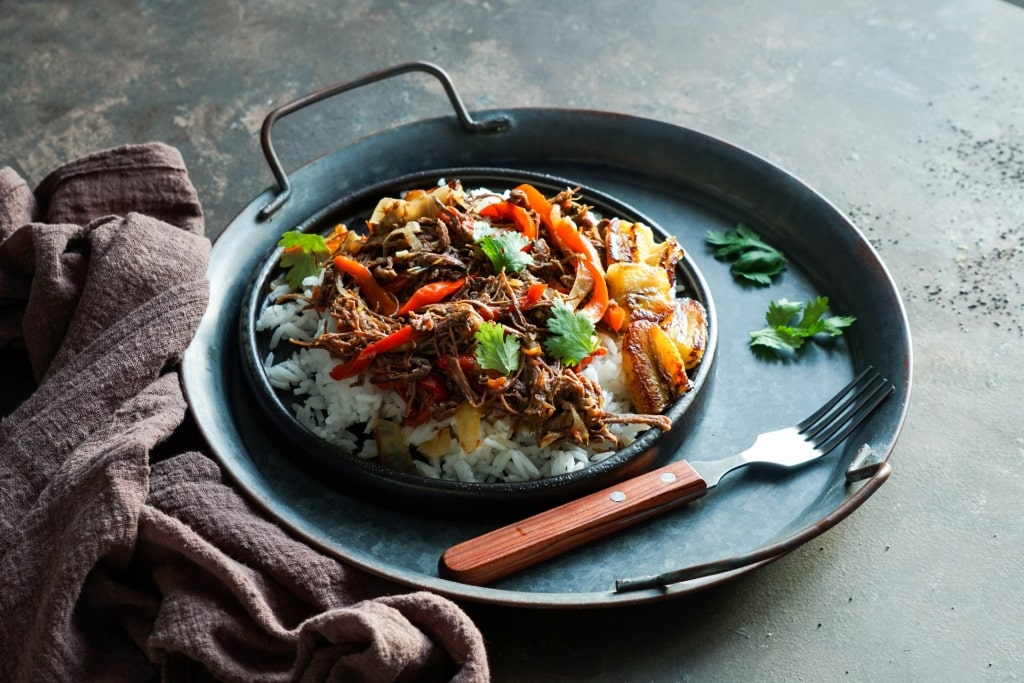
Ropa vieja
A tasty way to immerse yourself in local culture is by sampling Panamanian food and seeing how it was shaped by the mix of the many cultures that settled, worked, or passed through the region.
Ropa vieja, a thick stew of beef and leftovers, originated in Spain. For snacks, try patacones, chips made from toasted green plantains, or carimanolas, fried yuca balls mixed with meat.
Find such local dishes and others in El Trapiche, a reasonably priced eatery in Panama City’s San Francisco neighborhood.
Try a sandwich of ropa vieja served in puff pastry, tortillas, or bread, or the Panamanian party platter featuring ropa vieja, rice with chicken, fried yuca, carimanola, and patacones.
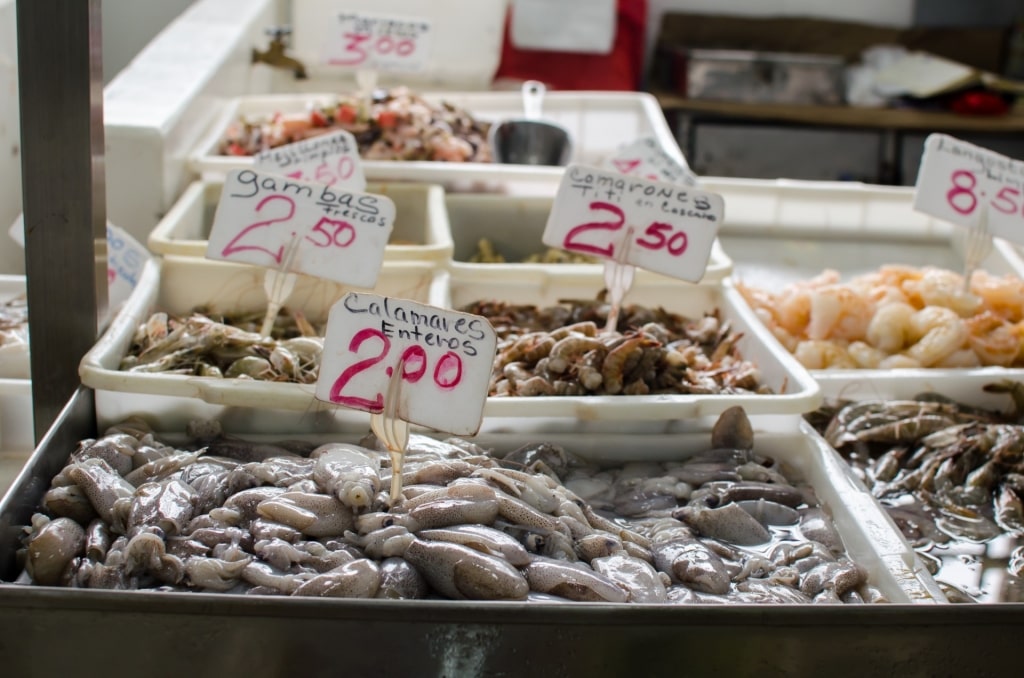
Mercado de Mariscos
Panama’s bounty of seafood is legendary. At Mercado de Mariscos, a seafood market near the entrance to Casco Vieja, the Old Quarter in Panama City, you walk past stalls of fresh-off-the-boat shrimp, tuna, wahoo, salmon, lobster, and more. At the facility’s seafood court, specialties include ceviche and seafood stew.
Shop for Local Crafts
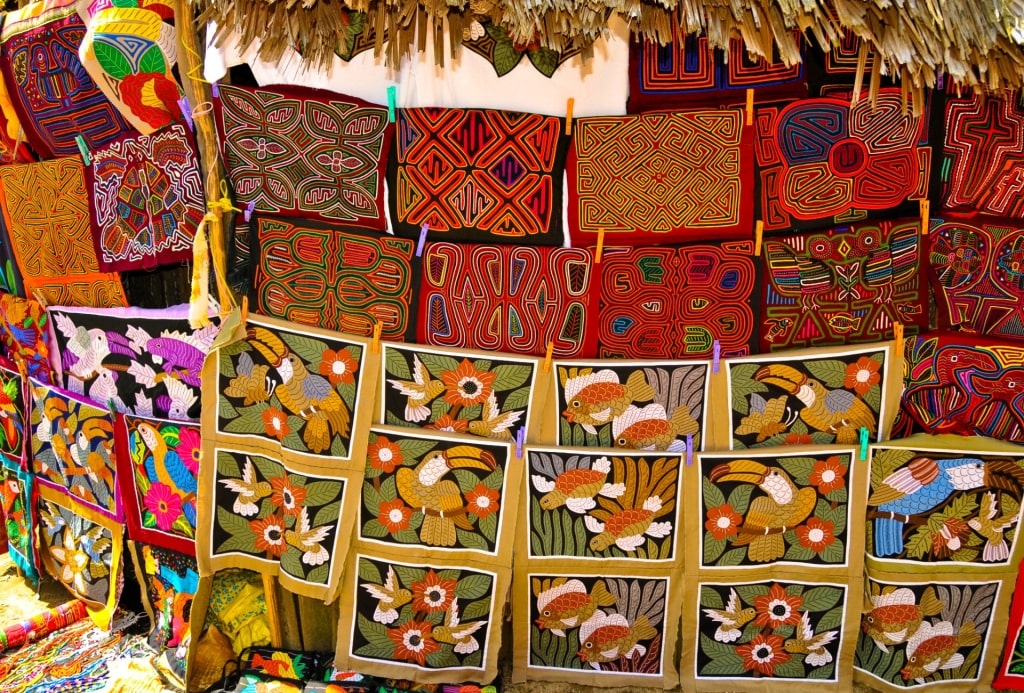
Local crafts
Shopping for Panamanian crafts is one of the best things to do when you visit the Panama Canal. Look for the brilliantly colored molas made by the Guna (previously called Kuna) people of the San Blas Islands on the Caribbean side of Panama.
Women wear two molas, a front and a back, as a shirt. To craft the designs of fish, birds, and intricate patterns, women sew layers of colored fabrics using an applique technique.
View some 200 authentic, hand-crafted versions at the Museum de la Mola (Mola Museum) in the Casco Viejo in Panama City. You can find molas and other handicrafts at Panama City’s Centro Nacional de Artesanías (National Crafts Center) near Casco Viejo.
Visit an Embera Village
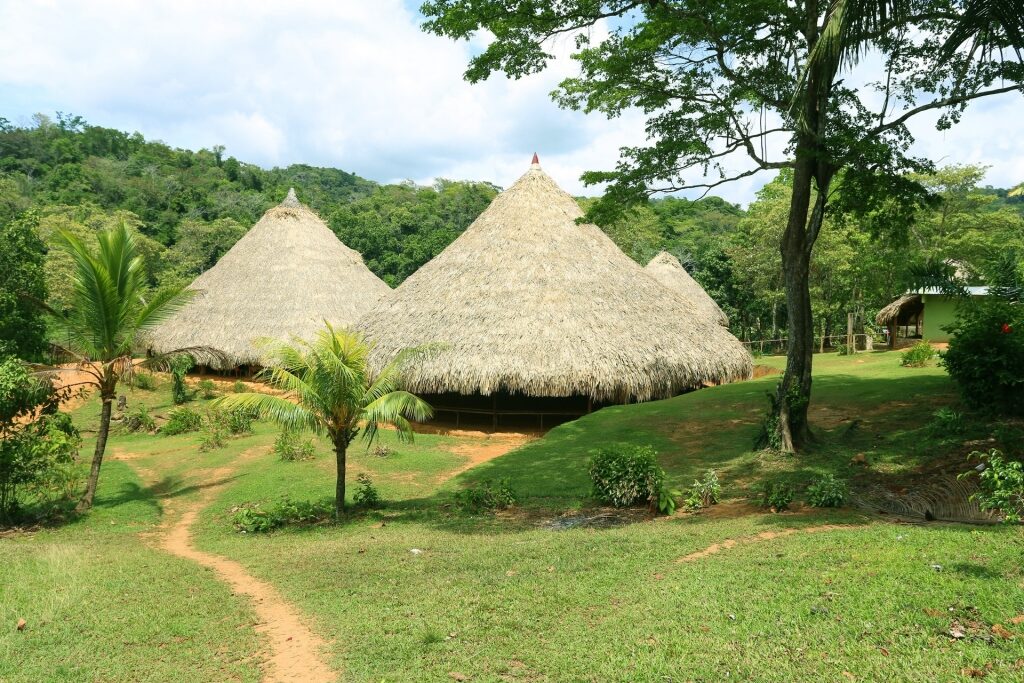
Embera Village
One of Panama’s Indigenous people, the Embera, reside in the seemingly impenetrable Darien rainforest along the Pacific Coast, but some have established villages along the Chagres River and on Gatun Lake and are happy to share their culture.
You arrive at the village in a dugout canoe, a nice touch that gives you sweeping water views and sets the tone for experiencing the Embera’s traditional ways.
This includes greeting you with songs and dances, and taking you through their thatched-roof community. Questions are encouraged, and you can ask how they blend their traditional ways with the culture of modern Panama.
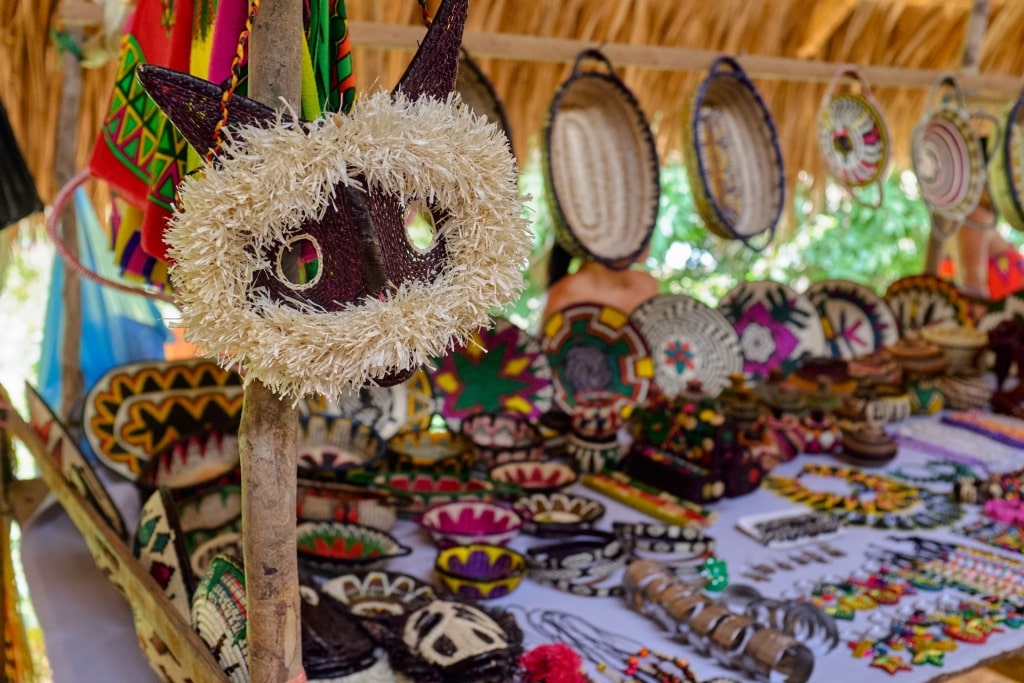
Crafts from the Embera Village
And of course, you can purchase their crafts, specifically exquisitely woven baskets, and figurines carved from cocobolo wood.
Buy your baskets direct from the tribe and you’ll get a much better deal than you would in a gallery in Panama City—and help them sustain their way of life.
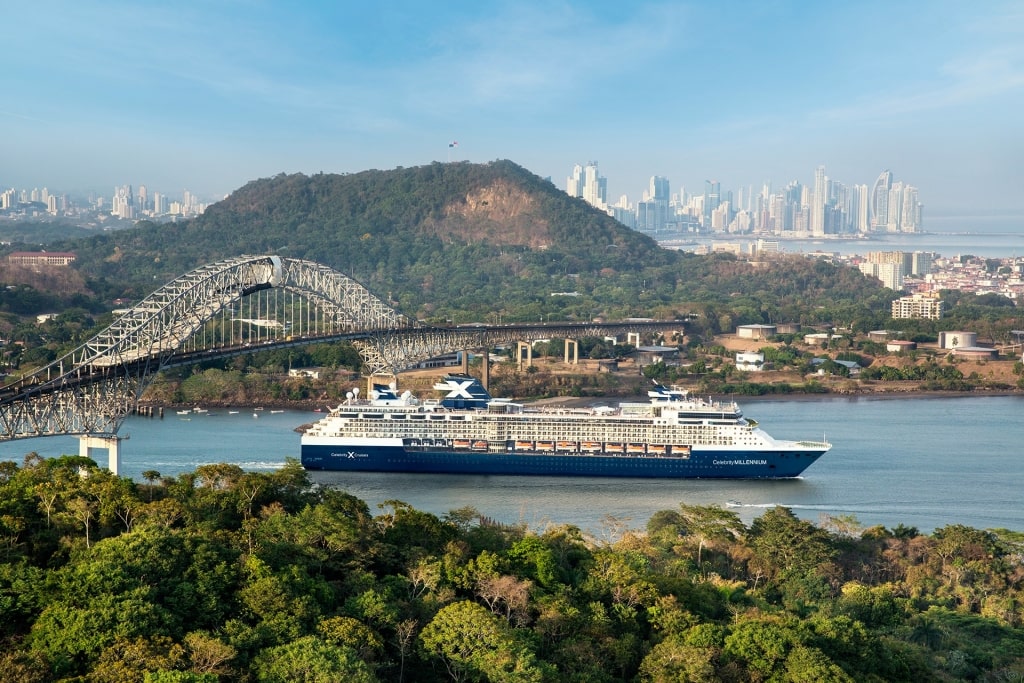
Panama
Excited about experiencing the Panama Canal? Browse Celebrity’s Panama Canal cruises and plan your adventure.


